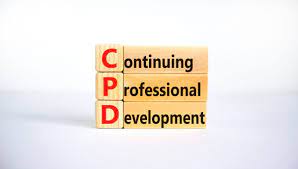Introduction
Action Learning Sets (ALS) are an innovative approach to professional development that emphasizes collective problem-solving and learning in a small-group setting. By fostering collaboration and reflective practice, ALS encourages individuals to grow in knowledge, skills, and confidence. In this article, we will explore how Action Learning Sets work, what makes them effective, and how they can be implemented as part of professional development programs.
What are Action Learning Sets?
Action Learning Sets were developed by Reg Revans, a British educational theorist, as a response to the limitations of traditional training methods. He argued that one-on-one or lecture-based training was often too rigid and passive to properly engage participants. Instead, ALS brings together a group of peers who commit to regularly meeting and exploring problems faced in their professional context.
These groups usually consist of 4-6 members from diverse backgrounds, roles, or industries. They come together regularly (monthly or bi-monthly) for a set period of time to discuss work-related issues and challenges they are facing. The goal is not just finding quick solutions but also gaining insights and developing skills that participants can apply in their workplaces.
How do Action Learning Sets work?
During an ALS session, members follow a structured process that includes:
1. Presenting: One member shares a work-related problem or issue they are facing.
2. Clarifying: The group asks questions to help the presenter clearly articulate the issue and identify underlying assumptions.
3. Exploring: The group collectively discusses possible solutions or approaches for addressing the issue.
4. Reflecting: Each participant reflects on the discussion and considers what they have learned or gained from it.
5. Committing: Members commit to applying learning points in their own work contexts, which might include implementing suggested solutions or trying out new strategies.
To ensure meaningful discussions and mutual support, each individual agrees to maintain confidentiality about the issues and experiences shared within the group.
Why are Action Learning Sets effective?
Action Learning Sets offer several benefits that contribute to their effectiveness as a professional development tool:
1. Shared experiences: By engaging with colleagues from different backgrounds, members can gain insights from various perspectives and learn new ways of approaching their work.
2. Collective wisdom: The collaborative nature of ALS allows for the pooling of ideas, knowledge, and experience, increasing the likelihood of discovering effective solutions and strategies.
3. Safe space for reflection: The confidentiality and non-judgmental nature of ALS provides a secure environment for individuals to openly discuss workplace challenges and improve their skills through constructive feedback.
4. Responsibility for learning: Through active participation in the ALS process, members take ownership of their learning and development.
5. Continuous improvement: By committing to applying learning points within their unique contexts, participants become more adaptable professionals who constantly seek growth.
Implementing Action Learning Sets in your organization
To establish successful ALS within your organization, consider the following steps:
1. Identify participants: Look for individuals who hold diverse roles or come from different departments or industries to maximize perspective-sharing.
2. Set clear expectations: Ensure that members are committed to attending sessions regularly and investing time in their own development.
3. Designate a facilitator: Appoint a skilled individual to guide each session and ensure that the learning process is followed effectively.
4. Schedule sessions: Plan well-spaced meetings to give participants enough time to apply lessons learned between sessions.
5. Evaluate outcomes: Assess the impact of ALS on participants’ professional development by gathering feedback and tracking progress over time.
Conclusion
Action Learning Sets have the potential to transform professional development by leveraging group dynamics, critical reflection, and diverse expertise. By committing to this structured process, organizations can promote personal growth .











